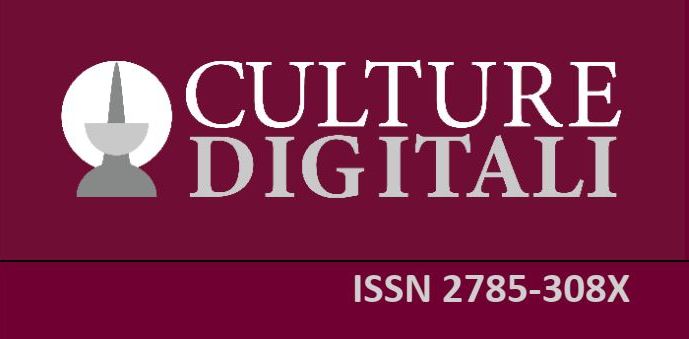a cura di “Scuola Digitale Liguria
Abstract:
“Un animale per amico”: gli strumenti digitali al servizio di un progetto di educazione ambientale
Il confine tra didattica digitale e didattica non digitale è mobile: con la crescente diffusione della tecnologia è sempre più difficile distinguere una fase “digitale” e una “non digitale” di un progetto, perché il digitale non è solo strumenti ma anche mentalità e metodo. Se è vero che la disponibilità di computer o tablet non è sufficiente per dire che in una classe venga svolta didattica digitale, è anche vero che è sempre più agevole costruire, nelle scuole, un ambiente di lavoro e un progetto implementando le prerogative (metodologiche e di organizzazione del flusso tra studenti e docenti) che il digitale porta con sé.
La prima conseguenza di questo avanzamento è che la tecnologia in senso stretto non è più necessariamente il focus di un’iniziativa didattica che realizza un buon impiego del digitale, ma ne diventa un fattore implicito. La tendenza è ampiamente documentata dal repertorio dei progetti didattici innovativi raccolti nell’Osservatorio di Scuola Digitale Liguria, progetto regionale dedicato all’innovazione tecnologica nel mondo della scuola che si sta affermando come buona pratica a livello nazionale e internazionale.
************
The boundary between digital and non-digital learning is movable: due to the growing spread of technology, it has become more and more difficult to distinguish a “digital” and a “non-digital” phase in a project, because the digital world is not only made of devices but also of mindset and method. If it is true that the availability of a computer or a tablet is not enough to say that digital learning is being used in a classroom, it is also true that it is becoming easier to build, in schools, a working environment and a project implementing the prerogatives (methodological and organizational of the stream between students and teachers) that digital learning brings.
The first consequence of this progress is that technology, in a narrow sense, is no longer necessarily the focus of a learning initiative that realizes good use of the digital, but becomes an implicit factor. This tendency is widely documented by the repertory of innovative learning projects gathered by “Scuola Digitale Liguria”, a regional program dedicated to technological innovation in the world of education. This program is gaining ground as a good practice on a national level and claims a STEAM citation on the European Digital Skills and Jobs Platform, for its methodology and replicability.
“Animals as friends” project, IC Boine (IM)
This is the case of a project realized by a school member of the Community of “Scuola Digitale Liguria”, the primary school “Vercesi di Caramagna” (part of IC Boine, an institute coordinated by Principal Serena Carelli), a complex located three kilometers away from the city center of Imperia, in the region of Liguria. The area is very green and the school is profoundly linked to the reality of its territory: the 150 students are all from the nearby localities, immersed in Imperia’s countryside.

In this context, the school has chosen to direct its educational paths on themes like the environment and sustainability, hospitality and inclusion, involving families and local associations. “Animals as friends” has been realized in collaboration with “Protezione Civile Ss. Trinità di Imperia”, particularly with Matteo Manconi and Niccolò Parisi, leaders of its canine unit, “Thor”.
It is an interdisciplinary project that considers the relationship between humans and animals, from different perspectives: historical, geographical and linguistic.
- Historical perspective. The theme is the change of the domestic animal’s role in society over time: from being only an assistant for hunting and work, to becoming an integral part of the family, and now for professional use in highly specialized tasks, like searching for drugs, explosive materials and missing people.
- Geographical perspective. In this case, the context of the Ligurian territory is utilized: the use of coordinates for research, GPS as an instrument to read the coordinates and the strict location of the searching dog’s position result in familiarization with cartography.
- Linguistic perspective. Linguistic skills are obviously transversal to the whole project, which offers great insights into the improvement of vocabulary, the proper use of specialized language and the ability to synthesize and narrate.
Since every student at IC Boine has an email address and the availability of a personal device, they easily identified with the school’s community and felt stimulated to use digital devices, even to carry out the shared requested work, in this and other projects, from the very beginning and at their best. Using Canva, they created a presentation of the objectives that they wanted to achieve with the project that they could also bring outside of the school environment. These included the knowledge of domestic animals, the correct approach, the use of rules such as respecting others and the improvement of pro-social, empathetic, collaborative and coordinative abilities).

During the activities, students (with age-appropriate timings and methods) took note of information gained and made a summary of the meeting using Google documents and other applications, functional to group work, such as Canva, PowToon and Prezi. The full report, written by several people, has contributed to increasing attentional, observational and mnemonic capacities and the ability to categorize and understand differences and similarities.
The project was carried out with monthly meetings, supported by audio-visual equipment and teaching materials, and included both theoretical and practical elements. In the theoretical part, anatomical, ethological and ecological notions were introduced and communicative differences between humans and animals were highlighted. In the practical part, they planned a journey of gradual approach to the animal in three phases: referential activities (the animal is thematic, but is not present), observational activities (the animal is present, but is not the object of direct interaction yet) and interaction activities (meeting and relating with the animal).

“Contenuto redatto con la collaborazione della docente dell’IC Boine Loredana Balistreri e tradotto dalla studentessa di Lingue e Culture Moderne dell’Università degli Studi di Genova Angelica Fieschi”
